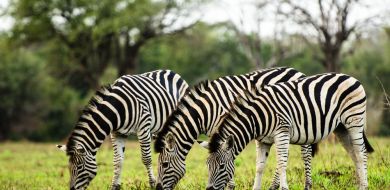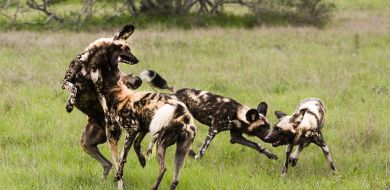Giraffe
on Dec 14, 2014The giraffe, Giraffa camelopardalis, is from the family Giraffidae which consists of only the giraffe and the okapi - a creature which looks vaguely similar to a giraffe, but bears zebra stripes and has a shorter neck. The scientific name of the giraffe refers to its skin pattern which is reminiscent of a leopard, and its face which somewhat resembles that of a camel. Giraffes are only found on the African continent, from Central to Southern Africa.
Giraffes are even-toed ungulates (hoofed animals), and are the tallest mammals in the world. Males of the species grow up to 5.5 metres in height and weigh in at between 800 - 1200 kgs. Females are around a metre shorter, and are a lot lighter - around 650 kgs! The characteristic long neck of the giraffe can measure up to 2 metres, nearly half of the giraffe's vertical height. Although the neck has such great length, it still only has 7 vertebrae, the same number as in human or most animal necks. The vertebrae are, however, about 10 inches (25cms) long.
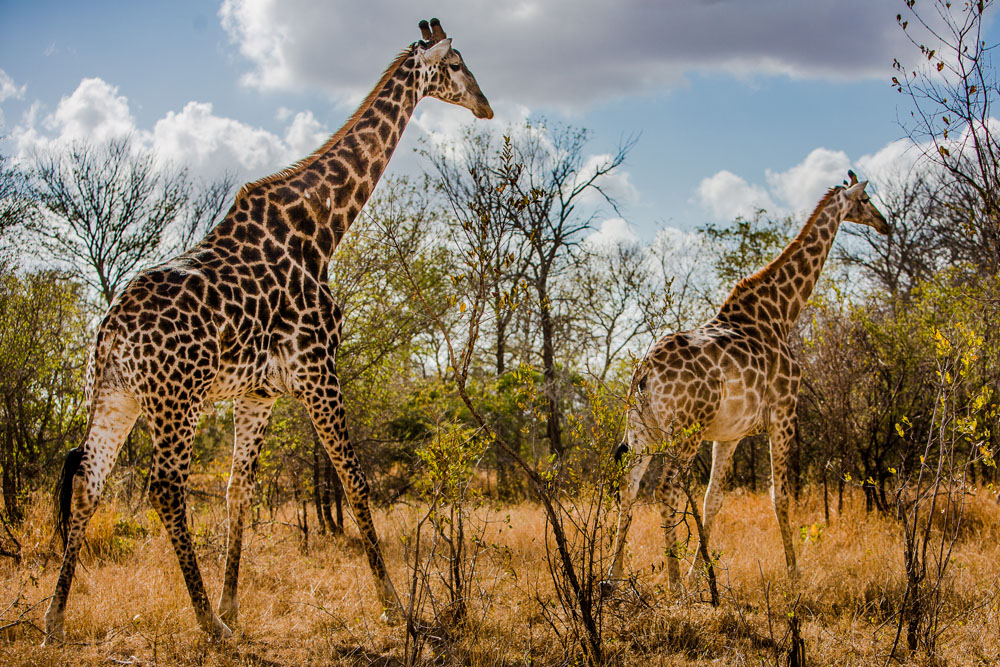
Giraffes do sleep, but for only about 4 hours per day which is less than most other mammals - and most sleep is taken standing up (although they will sometimes lie down). Being so tall, lying down to sleep is both dangerous and a challenge; dangerous because they are vulnerable to predators in a prone position, and challenging because it is difficult for them to stand up again. Lions, which are an adult giraffe's main predator, will attempt to knock this prey off its feet, or chase the giraffe into rocky or slippery terrain where it may slip and be easier to catch. A single kick from a giraffe's powerful legs can, however, be lethal to a lion. Giraffe calves are hunted by hyaenas, wild dogs, leopards and lions. Sadly only 25 to 50% of giraffe calves reach adulthood.
Giraffes are browsers, favouring acacia trees. They have extremely long, prehensile tongues which are able to grab leaves; and tough palates and lips which allow them to pull leaves off thorny branches. Other than elephants, giraffes are the only browsers that can feed from tree branches which are 2 metres and higher off the ground, giving them a distinct advantage over other browsers. Giraffes do not need to drink water very often, getting most of their necessary moisture from leaves. When they do drink, they are defenceless, and spend a long time getting ready - being very nervous and watchful while spreading their front legs wide in order to bring their very long necks as close as possible to the water. To get up and out of this bent over position takes time and this could mean the difference between life and death if there is a lion on the hunt. The giraffe's upper neck has an intricate pressure regulating system called the rete mirabile which stops an excess amount of blood from pumping into the giraffes head when it is in the downward drinking stance.
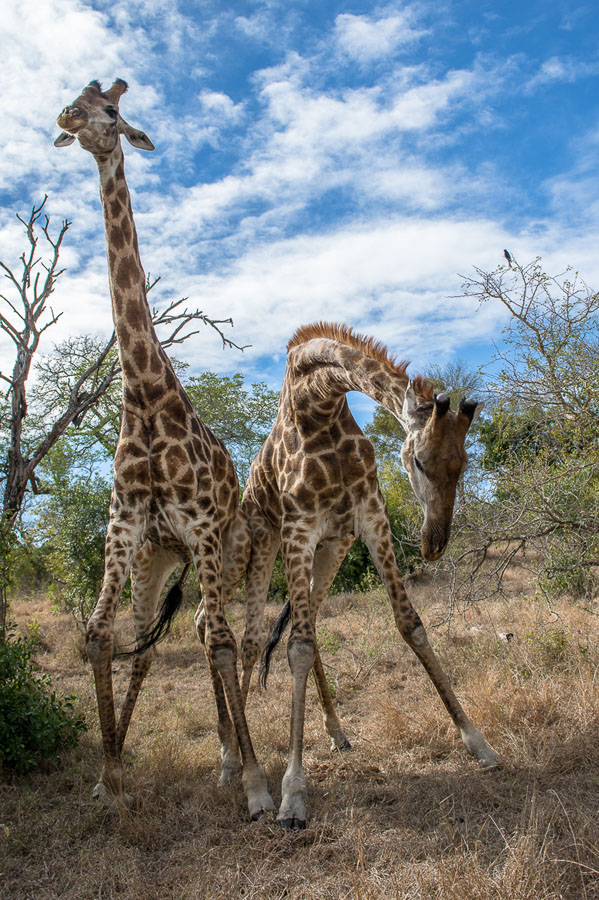
Giraffes have a gestation period of about 14 months, after which they generally give birth to one calf. The female gives birth standing upright and the calf drops straight to the ground. Folded back protrusions on the calf's head eventually develop into horns, with those of the male being strong and stumpy, and those of the female being more slender. Some older males develop calcium bumps on their skull in between their horns creating the illusion of a third horn. Giraffes reach maturity after four to five years. At this point the males begin to participate in a duelling behaviour called necking, which is typically associated with fighting for females. During these confrontations they intertwine and swing their necks, delivering blows to each other. Very occasionally, unless one of the males surrenders, these fights can be fatal.
The giraffe has front legs which are about 10% longer than its hind legs, giving it a sloping back. It walks like a camel, moving both legs on one side of its body in unison, and then both legs on the other side. The gallop is completely different, with the front legs being thrust into the air, and the hind feet swinging forward and landing outside of the front feet, a process which is repeated as they touch the ground after being completely airborne for an instant. Over short distances giraffes can achieve speeds of up to 60km/h.
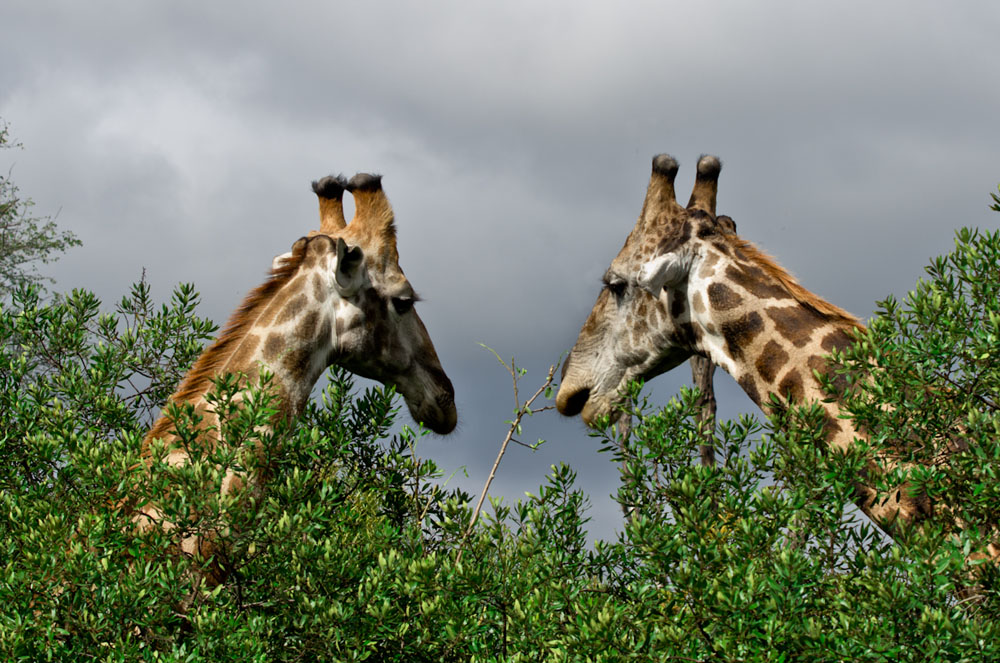
Giraffes are found in loose groups which break up every few hours. Females, young and the sub-adults tend to stay together for longer periods than the nomadic mature males. The collective noun for a group of giraffes is a herd, although they are colloquially called a journey of giraffes - which aptly describes the way they traverse their typical savannah, woodland and grassland habitat.
